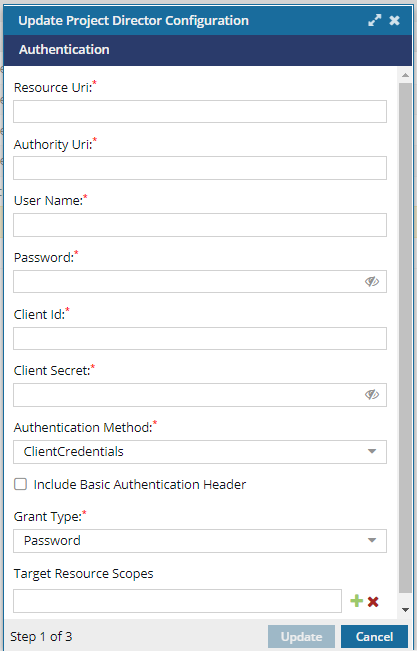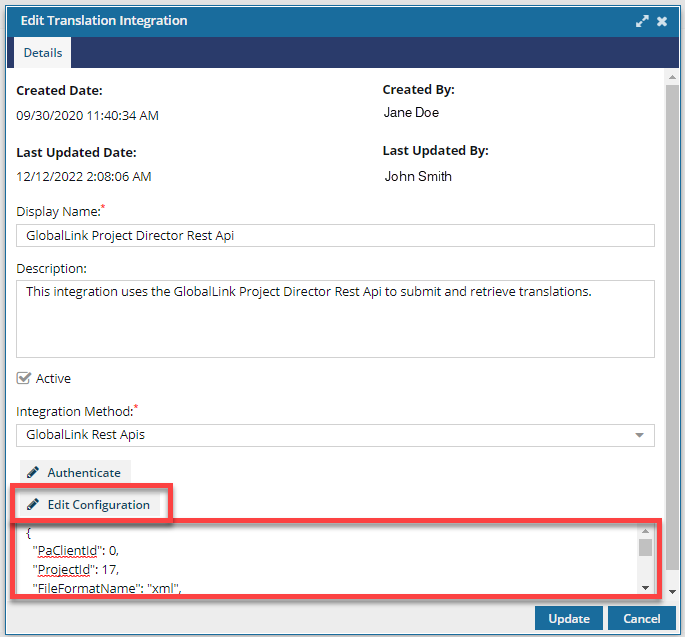Authenticate an API translation integration
After you create an API integration method, you must ensure that Inspire has all the information necessary to pull information from a GlobalLink Enterprise (formerly known as Project Director) submission. First you must Authenticate an Active integration method. This action allows Inspire to contact GlobalLink Enterprise using the OAuth information you supply. Authentication verifies Inspire's identity, and authorization determines Inspire's access rights to GlobalLink Enterprise information. If Inspire can't authenticate successfully with GlobalLink Enterprise, you see an error. If Inspire can authenticate successfully with GlobalLink Enterprise, you can see the configuration and can edit it if necessary.


![]() Inspire uses OAuth, an open-standard authorization protocol that provides applications with secure designated access. Authentication verifies Inspire's identity, and authorization determines Inspire's access rights to GlobalLink Enterprise information.
Inspire uses OAuth, an open-standard authorization protocol that provides applications with secure designated access. Authentication verifies Inspire's identity, and authorization determines Inspire's access rights to GlobalLink Enterprise information.
- OAuth doesn’t share password data but instead uses authorization tokens to prove an identity between GlobalLink Enterprise and service providers such as Inspire.
- OAuth works over HTTPS and authorizes devices, APIs, servers, and applications with access tokens rather than credentials.


To authenticate a translation integration method:

 The secret should be known only to the OAuth application (GlobalLink Enterprise) and the authorization server. The client secret is generated during the process of application registration.
The secret should be known only to the OAuth application (GlobalLink Enterprise) and the authorization server. The client secret is generated during the process of application registration. Results:
Results: